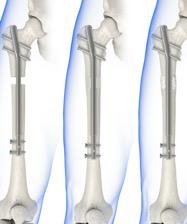Limb lengthening
What is Limb Lengthening?
Limb lengthening is accomplished via the body’s capacity to generate new bones as well as the adjacent and supportive soft tissues, ligaments, blood vessels, and nerves. It begins with an osteotomy, in which the orthopaedic surgeon slices the bone to extend it. After that, the limb is stabilised with a variety of external or internal framework fixations.
It may be done acutely or gradually:
- Acute Limb Lengthening – Because some limb deformities may be addressed abruptly by limb rebuilding, therapy is completed in a single surgery and no progressive correction is required. By this type of operation, the bone that has to be mended is separated, reorganised, and then held in place with iron plates and screws.
- Gradual Limb Lengthening — An outside fixator is installed on the limb in this operation, which can stretch a shortened limb, rectify deformity, or even both. The fixator is used by the surgeon to conduct an osteotomy. This signifies that the bone is gradually separated. The doctor will select where to execute the osteotomy based on the type of modification required for the person.

What are the symptoms of Limb Lengthening?
- A leg shorter than the other
- Walking issues
- Posture issues
- Pain
Evaluations for Lengthening
- X-rays
- MRI
- Hormone tests
Treatment for Limb Lengthening
During this surgery, the patient will be sedated. A skin incision is made, and the bone is inserted into the extending device. A second incision is made to cut the bone. This is the area in which the bone develops. The extending device is put through the sliced bone. Screws are used to secure the lengthening device in place. Using the remote controller, the surgeons ensures that the magnetic motor is operational. The incisions are closed using stitches.
